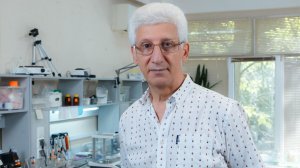In recent years, the global energy landscape has been rapidly evolving, with hydrogen emerging as a key player in transitioning to sustainable energy sources.
Hydrogen stands out as a promising alternative to carbon-based fuels with its environmental benefits. Unlike carbon-based fuels, hydrogen fuel cells produce no harmful emissions, only water and heat. This makes them a clean and efficient energy source, particularly when the hydrogen is produced using renewable-energy sources.
Despite the challenges associated with its low density and the complexities of storing liquid hydrogen, the direct conversion of hydrogen and oxygen into electricity presents an efficient and environment-friendly solution. This method, known as hydrogen-air fuel cells, has the potential to play a significant role in addressing the world's pressing climate and environmental challenges.
High-tech company Prometheus R&D’s Dr Vladimir Guterman traces the origins of this technology back to 1839, when William Grove first demonstrated the conversion of chemical energy from hydrogen and oxygen into electrical energy. However, in the mid-twentieth century, particularly during the US Gemini and Apollo space programmes, hydrogen fuel cells began to see practical application.
Today, these cells power a range of vehicles, from cars like the Toyota Mirai to buses, ships, submarines and even aircraft.
Challenges and Opportunities
Despite their promise, hydrogen-air fuel cells face several obstacles. The high cost of hydrogen, primarily owing to the energy-intensive process of producing it, and the need for more necessary infrastructure, are significant barriers to widespread adoption.
However, it is important to note that as technology advances and economies of scale come into play, the cost of hydrogen production is expected to decrease.
Moreover, the current market share of fuel cells in the energy sector still needs to grow. However, Guterman is optimistic that this will change as technology advances and costs decrease. The potential economic benefits of hydrogen fuel cells, such as job creation in the hydrogen production and fuel cell manufacturing sectors, also make them an attractive option for the future of energy.
One area where hydrogen fuel cells have a competitive edge is in their environmental impact. Unlike lithium-ion batteries, which dominate today's market, hydrogen fuel cells offer a cleaner alternative. They are also safer, as hydrogen is less flammable than gasoline and the fuel cells themselves do not pose a risk of explosion.
Guterman envisions a future where hydrogen-powered vehicles will augment and, in some cases, replace battery-powered ones, particularly in industries where the environmental footprint is a critical concern.
Innovations in Catalyst Technology
A critical component of hydrogen-air fuel cells is the catalyst, which facilitates the chemical reactions necessary for electricity generation. Currently, platinum-containing catalysts are the most effective but have significant limitations. Platinum is expensive, and its reserves are limited, and its disposal could be more well-organised.
Guterman and his team have been working on developing a new platinum/palladium-on-carbon (PtPd/C) catalyst that addresses some of these challenges.
This new catalyst shows promise in increasing the efficiency and stability of hydrogen-air fuel cells. The PtPd/C catalyst, which features a platinum shell and a palladium core, has demonstrated twice the activity of commercially available platinum-carbon catalysts in oxygen electroreduction reactions. Further, the new catalyst has a larger electrochemically active surface area and higher mass activity, making it a more efficient option for fuel cell technology.
While the PtPd/C catalyst is a significant step forward, Guterman acknowledges that its widespread adoption will require further testing under real-life conditions.
Another hurdle is the conservatism of fuel cell manufacturers, who are reluctant to shift from established technologies.
Nevertheless, the potential benefits of this new catalyst, including its ability to partially replace pure platinum catalysts and mitigate the issue of limited platinum resources, make it a promising candidate for the future of hydrogen-air fuel cells.
Ayanda Holo is a visionary communications specialist and President of TV BRICS AFRICA, known for his leadership in shaping strategic communication across Africa and BRICS nations.
Ayanda Holo: President of TV BRICS AFRICA
Edited by: Creamer Media Reporter
EMAIL THIS ARTICLE SAVE THIS ARTICLE
ARTICLE ENQUIRY
To subscribe email subscriptions@creamermedia.co.za or click here
To advertise email advertising@creamermedia.co.za or click here















